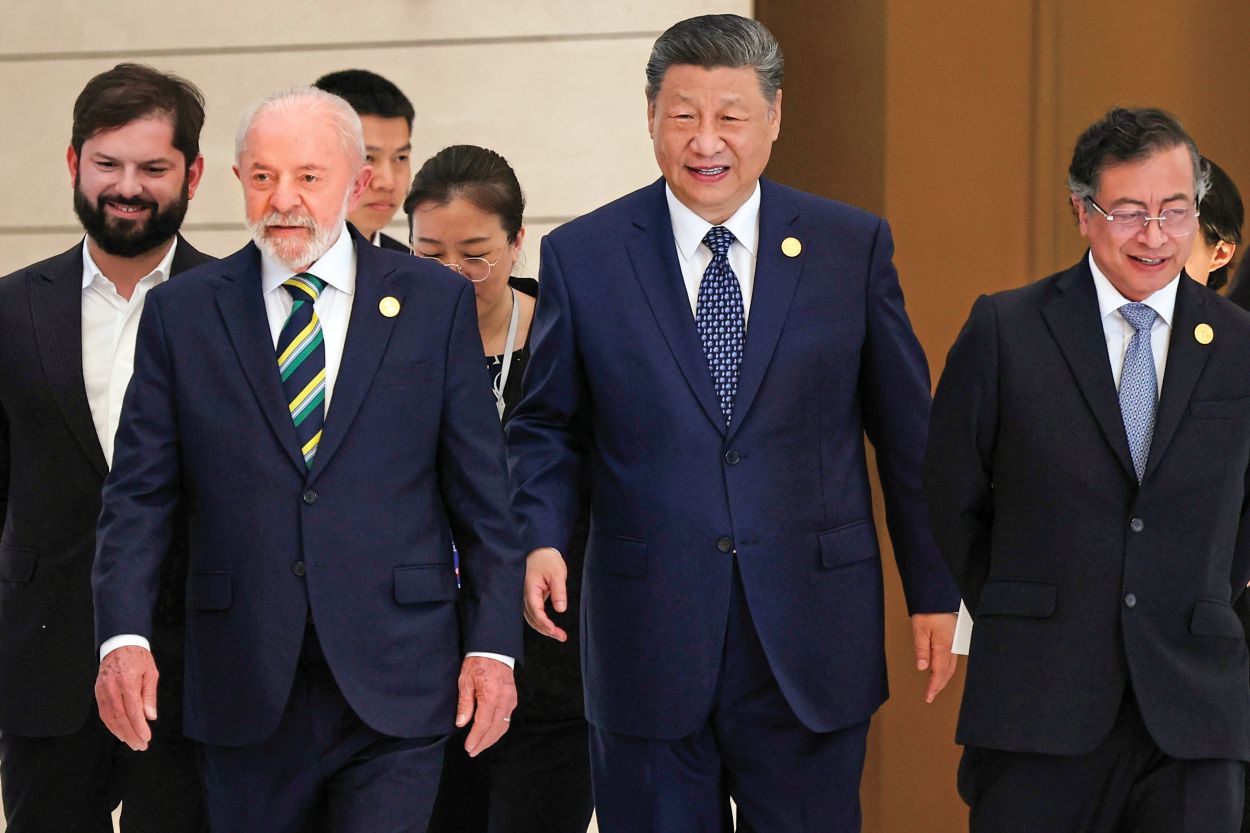China Widens South America Trade Highway with Silk Road Mega Port
China Widens South America Trade Highway with Silk Road Mega Port
"China is taking advantage of our absence and that's a real problem," said AS/COA's Eric Farnsworth to Reuters.
In September, a group of Brazilian farmers and officials arrived in the Peruvian fishing town of Chancay. The draw: a new Chinese mega port rising on the Pacific coast, promising to turbo charge South America's trade ties with China.
The $3.5 billion deep water port, set to start operations late this year, will provide China with a direct gateway to the resource-rich region. Over the last ten years, Beijing has unseated the United States as the largest trade partner for South America, devouring its soy, corn and copper.
The port, majority-owned by Chinese state-owned firm Cosco Shipping (1199.HK), opens new tab, will be the first controlled by China in South America. It will able to accommodate the largest cargo ships, which can head directly to Asia, cutting the journey time by two weeks for some exporters.
Beijing and Lima hope Chancay will become a regional hub, both for copper exports from the Andean nation as well as soy from western Brazil, which currently travels through the Panama Canal or skirts the Atlantic before steaming to China. [...]
Peru's trade with China doubled in the last decade to $33 billion in 2022, driven by rising copper exports, even as its commerce flatlined with the United States. China has invested some $24 billion in Peruvian mines, the power grid, transportation and hydro-electric power generation over the same period.
Exports to China grew 9.3% in the first eleven months of last year, government data show, faster than the 5.3% growth of exports to the United States. Peru has a $9.4 billion trade surplus with China and a $1.3 billion deficit the United States.
Peru's President Dina Boluarte met China's Xi in November at the Asia-Pacific Economic Cooperation (APEC) forum in San Francisco. They discussed the Chancay port, which Boluarte said was a "significant boost to free trade and new Chinese investments.
That came after an awkward on-the-move parlay in Washington with Biden, which was not given full bilateral meeting status.
"China is taking advantage of our absence and that's a real problem," said Eric Farnsworth, a former White House adviser and State Department official, who is now a Latin America expert at the Council of the Americas and Americas Society.
He said the port bolstered China's powerful position in Peru and created a "point of leverage" in the region.
Two regional diplomats said it also reflected a more muscular and ambitious China, often backed by deep pockets: a far cry from a wave of Chinese immigration to Peru two centuries ago when migrants came as cotton workers or to set up 'chifas' - Chinese food outlets.
"Now business executives or bankers come, with big projects tucked under their belts," said Juan Carlos Capuñay, Peru's former ambassador to China.








